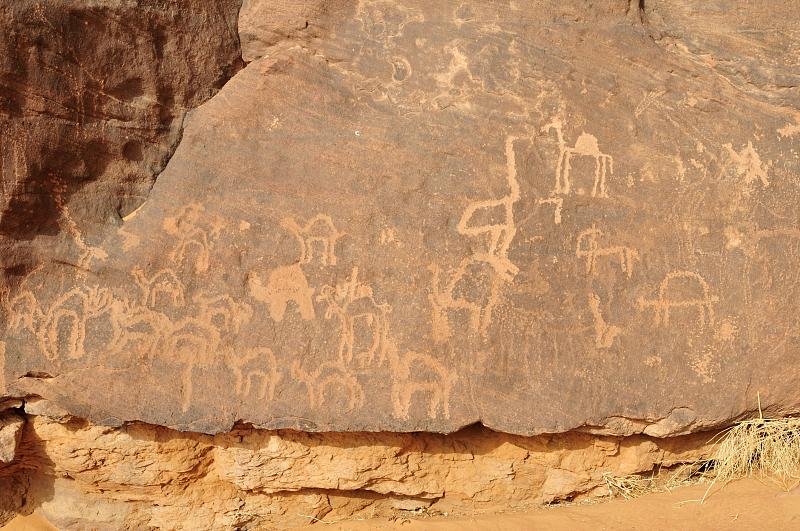Nestled in the formidable expanses of the Sahara Desert, in the southeastern part of Algeria, lies a unique cultural and historical treasure – Tassili n’Ajjer. This extraordinary site, with its breathtaking vistas and remarkable biodiversity, holds within its sandstone caverns one of the world’s most significant collections of prehistoric cave art.
From the austere beauty of the desert emerges a rich tapestry of human history, meticulously etched into the cave walls of Tassili n’Ajjer. This site boasts an impressive repository of over 15,000 drawings and engravings, each a testament to the prehistoric inhabitants’ artistic prowess and an intriguing reflection of the environmental and societal transformations they witnessed.
The artistic record at Tassili n’Ajjer stretches back as far as 6000 BC, making it a vast pictorial chronicle that has captured key phases in the Sahara’s evolution over millennia. The cave art presents a vivid tableau of the shifting climatic patterns and the resulting ecological transformations. It provides invaluable insights into the various species that migrated across the region, tracking changes in fauna across vast temporal expanses.
Furthermore, the engravings also serve as a remarkable historical document of human life in prehistoric Sahara. They offer glimpses into the evolution of human societies, from hunter-gatherer communities to more settled societies, up until the first few centuries of the Common Era. From depictions of hunting scenes and domesticated animals to portrayals of tribal dances and celestial bodies, the cave art of Tassili n’Ajjer presents a compelling narrative of human adaptation and ingenuity.
In recognition of its outstanding universal value, Tassili n’Ajjer was inscribed as a UNESCO World Heritage Site in 1982. This prestigious status underscores the site’s contribution to our understanding of prehistoric art, climate, and civilization. It also places an imperative on preserving this incredible repository of human history for future generations.
Today, Tassili n’Ajjer stands as a testament to the enduring spirit of humanity against the backdrop of the Sahara’s harsh beauty. For the intrepid explorer and curious historian, a journey to Tassili n’Ajjer is not merely a visit to a historical site; it’s a profound encounter with our shared past, a tangible link to our prehistoric ancestors, and a stirring reminder of the enduring power of art as a chronicle of human experience.
READ MORE:
